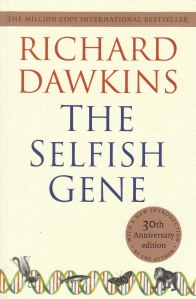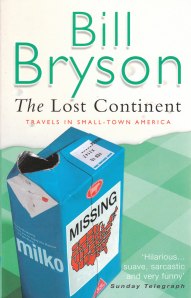Publisher: Reader’s Digest
Date Published: 2007
Pages: 320
My mum and I were trying to find a way to eat more vegetables, as well as a couple of vegetarian dinners a week. We were originally going to buy a vegetarian cookbook, but we found that while the vegetarian books had a lot meat imitation recipes (like meat imitation burgers and sausages etc) that would be useless to us. Being an omnivore, if I want a burger I’ll choose the meat kind. (I also don’t like to eat food that have a lot of interference. Have you ever read the ingredients lists on some of those meat imitation products? If I were a vegetarian I wouldn’t bother with them). I inevitably came across ‘Vegetables for Vitality’ and it was exactly what I was looking for, as if it had been beamed down by my mental request.
‘Vegetables For Vitality’ has an easy to read lay out, with each recipe having numbered steps and the ingrediants listed clearly. The presentation is quite colourful, though white is used behind the instructions for clarity. Servings, prep and cooking times are also displayed along with little ‘did you know?’ factoids. It includes more than 200 recipes divided into the following sections:
- eggs & breakfast
- drinks, snacks & starters
- savoury soups
- chicken & turkey
- beef, lamb & pork
- fish & seafood
- pasta & noodles
- vegetables, pulses & grains
- vegetable side dishes
- fresh, grilled & roasted salads
- breads & muffins
- cakes, cookies & desserts
‘Vegetables For Vitality’ is great for people who are dieting or following their nutrition closely for any other reason (as well as those like myself who just love veg for no good reason). Every recipe has a summary of its kilojoules, protein, fat, saturated fat, cholesterol, carbohydrates, fibre and sodium per serving. Indeed, the book is bursting at the seams with information. Part recipe book, part health book, ‘Vegetables For Vitality’ opens with a daily nutritional intake table for men and women and continues with sections dedicated to methods of farming veg, tips on shopping at farmers markets, the health benefits of veg (fibre, fuel, protein etc), the top 10 veg, top 10 vitamins and minerals (and the corresponding veg where you can ‘find it’), a vegetable ‘arsenal’ (which veg protects against which health conditions), 10 ways to eat more vegetables, a seasoning guide, 10 handy tips to eat more veg, essential kitchen equipment and finally how to cook without loosing nutrients. This is all before the actual recipes – yet afterwards it also has an ‘A-Z Guide To Vegetables’ (see the fourth scanned picture above) which gives information for each vegetable, including how to season, what to look for, storage, basic cooking, best use, ‘fresh idea’s and more nutritional breakdowns.
The recipes themselves make vegetables behave as if they were on steroids and no longer satisfied with sitting pretty behind the usual spotlight – meat. Vegetables suddenly become not just yummy and healthy, but dazzling. My mother cooked the ‘Spring Vegetable Saute With Tarragon’ (pg 199) along with a fillet steak, yet everyone was more interested in commenting on how beautifully cooked the vegetables were. Another cracking example is the ‘Chilli With Beans, Tomatoes & Corn’ (pg 173) (basically replace the minced beef in Chilli Con Carne with a mix of vegetables). I definitely prefer this to the meat variety and sometimes cook a batch for the week’s work lunch (I just section it into tupperware containers, take one a day and heat it up in the microwave in the staff room). While most recipes emphasise the epic tastyness of veg, there is also a selection of recipes where the vegetable content is hidden (‘Secret-Ingrediant Chocolate Cake’ (pg 243) using tomato juice is a fine example) – a great way for tricking fussy eaters into more nutrients (though I prefer the ‘eat what I give you or go hungry’ tactic)
I wouldn’t recommend it to a vegetarian or vegan unless it was complimentary to their other cookbooks. Although ‘Vegetables for Vitality’ has a good choice of meat and diary free recipes, it is aimed at those who want to maximise their vegetable intake and eat closer to the ideal of 5 serves recommended a day whilst retaining their meat eating (or those who simply want to ‘pimp up’ their existing veg repertoire). I am not sure whether it supplies enough recipes that take into account the higher servings of proteins and other minerals that a meat free diet needs for balanced nutrition.
The photography is the only reason ‘Vegetables For Vitalilty’ did not receive a perfect score. Although the least important aspect for any cooking book, food photography is considered one of the highest selling points and a part of creating a desire to try cooking. unfortunately, some of the pictures are partly out of focus, others completely blurred (you can see this blurriness on the cover image. I’ve chosen the two other pages because their photography was of good quality). When in focus the photography is nothing special, though adequate. Considering some of the amazing food photography I have seen on amateur recipe blogs lately there is a higher standard expected of published books with a studio and professional photographers available.
‘Vegetables For Vitality’ is an extremely well planned and executed book. It is clear that team at ‘Reader’s Digest’ have put a lot of effort into collecting the information and selecting the recipes. It is excellent not only for its ease in use, bounty of information but also for its genuinely tasty recipes.
♥♥♥♥½ – 4½/5







A shame about the photography, but it sounds like a handy book – I’ve been trying to shift my diet in a similar way, not excluding meat but increasing the proportion of vegetables. I’ll have to check it out!
We eat what I call mixed vegetarian. That means quite a lot of vegetarian meals, but when we eat meat we don’t pretend it is something else. I join you in not liking vegetables tricked up as fake meat. I recommend the Moosewood Cookbook as a good example of vegetarian dishes that present themselves honestly and are not too complicated to make.